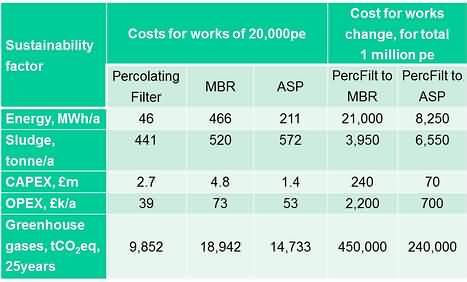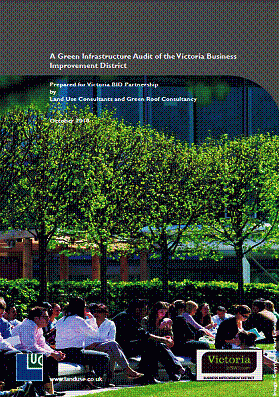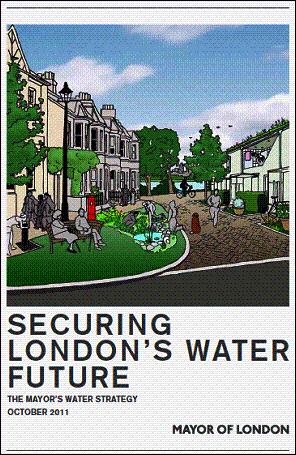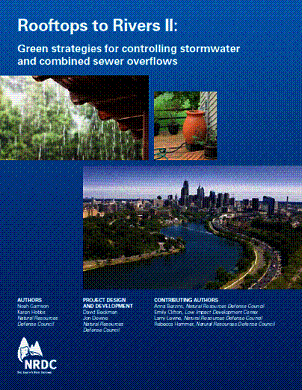
WASTEWATER RESEARCH AND INDUSTRY SUPPORT FORUM
Meeting 1st March 2012
Please note that for older reports some links will be to sites that are no longer active.
This was the Forum’s 46th meeting and the first to be chaired by Paul Hickey, Head of Land and Water Quality at the Environment Agency. It was held in the Boardroom of the Chartered Institution of Water & Environmental Management (CIWEM) in London. Members of CIWEM’s Wastewater Management Panel joined the Forum for the technical presentations and discussion. A roundup of members’ research discussed the following:
CEH is completing a project measuring pharmaceuticals in raw water from surface abstraction and treated water going into potable supply. Four water treatment works have been sampled monthly. Concentrations measured have been one-millionth or less than the therapeutic dose. No cytotoxic pharmaceuticals were found. The Secretary suggested that these results are so important, and the subject so emotive, that it would be worth discussing with the Science Media Centre a media briefing.
Loughborough University is one of eight prestigious institutions worldwide (and the only British one) to receive a grant for The Bill & Melinda Gates Foundation’s “Reinvent the Toilet Challenge”. The concept is that to solve the needs of the 2.6 billion people who don’t have access to safe sanitation it will be necessary to do something different from the water closet with water-borne sewage to a centralised treatment works because the infrastructure is unaffordable as well as having maintenance implications. Just as countries have leapfrogged fixed line telephony by going straight to mobile phones, the goal is for radically different sanitation. Loughborough is using hydrothermal carbonisation (200 °C; 20 bar) followed by combustion, the whole process being autothermal and the ash being fertiliser – primarily phosphate and potassium. It will cost a few pence per day to run.
Loughborough has been continuing work on co-digestion of sewage sludge with other wastes and finding that biogas yields are greater than separate digestion, i.e. there is synergy. Re-examination of rapid gravity filtration for water treatment has found that plate-shaped media filters better than spheroidal media.
The Advocate-General gave an Opinion on 26 January 2012 on the infringement proceedings brought by the European Commission against the United Kingdom in respect of Directive 91/271/EEC (2) concerning urban waste water treatment that could clarify interpretation of tolerance of spills, exceptional weather and adequacy of treatment .
WRc has been updating the work on carbon-accounting for UKWIR. This is an area of active research, but unfortunately, because of its pricing policy for reports UKWIR’s research is rather out of the loop of general development of ideas. The Carbon Accounting workbook is £500 and the Guidelines for accounting for 'Embodied' Carbon is £1000, both free to UKWIR members but priced out of interacting with the wider research community.
Technical Presentations with members of CIWEM’s Wastewater Management Panel
The Environment Agency’s Hot Topics
Paul Hickey, Head of Land and Water Quality at the Environment Agency
The second cycle of the Water Framework Directive is requiring much work. There are significant water management issues; we have been looking backwards to correct problems, for the future we need to act in anticipation. Phosphorus is an issue and we don’t understand it enough; there’s also the question of P in detergents (laundry and dishwasher) and dosing P to suppress plumbosolvancy. Chemicals in the environment, how much of a problem are they, and which ones? Whatever is done, it needs to be evidence based.
Impact of Wastewater Treatments on Removal of Noroviruses from Sewage.
Rod Palfrey, WRc
Norovirus (also called Winter Vomiting) is frequently linked to cycling through shellfisheries from WwTW discharges. Shellfish concentrate NV particles because they are filter feeders; the infective dose is only 1-10 particles. Shellfisheries are worth £25-40 million per year. There are about 1 million human cases per year in UK. It is a major risk to elderly and other immuno-compromised populations. NV cannot be enumerated by culturing so the only way is measure the NV gene template (using Reverse Transcription PCR for RNA, which tells you whether it is, or has been, in the sample but not whether it is viable) or to use a surrogate that can be cultured.
5 WwTW (3 coastal) were selected as examples of different treatment processes to assess whether treatment process affects removal efficiency. The processes were: Advanced activated sludge, High rate activated sludge, Biological (percolating) filter, Chemically aided settlement (CAS) + biological aerated flooded filter (BAFF) and Membrane bio-reactor. They were sampled between November 2010 and February 2011. 70 samples were collected in total. NV was found at most WwTW most of the time. The faecal indicators E.coli, total coliforms, F+ & somatic coliphage were also measured. Works’ operation indicators (BOD and suspended solids) were included.
The study found that wastewater treatment reduces NV load and that activated sludge processes and Membrane Bioreactors were more effective than the other processes. Figure 1 shows the cost of the different types of works and of upgrading percolating filter works to activated sludge or to membrane bioreactor, not just the financial cost but also the carbon cost.

Figure1 Example costs of different WwTW designs for 20k p.e. and the cost of converting percolating filter works for 1M p.e. to MBR and Advanced Activated Sludge
[However, even if this massive investment were made, wastewater collection and treatment can never be a ‘critical control point’ (HACCP) for controlling the cycle of NV through shellfish and back to humans because of the inevitable storm overflows and other bypass. Secretary]
Surface water management and urban green infrastructure in the UK: benefits and challenges
Prof. Richard Ashley, University of Sheffield, University of Bradford, UNESCO IHE Delft
Flood Resilience Group and Lulea Technical University, Sweden
This presentation was based on the updated ROCK “Surface water management and urban green infrastructure” . There are several definitions but the CNT’s (Center for Neighborhood Technology Green founded in 1978) is suitable: green infrastructure (GI) is a network of decentralized stormwater management practices, such as green roofs, trees, rain gardens and permeable pavement, that can capture and infiltrate rain where it falls, thus reducing [and/or slowing] stormwater runoff and improving the health of surrounding waterways .
 The multiple benefits (liveability, urban heat island, wind-chill in winter, water resources, biodiversity, well-being, climate change, etc.) of green infrastructure are well recognised generally. They are increased when green infrastructure is also used in surface water management to either prevent runoff or at least modulate the rate so that the peak height of the rate of runoff does not exceed the capacity of the ‘grey’ infrastructure. But when drainage options are considered, usually only the financial costs are calculated because budgets are held in different ‘accounts’ and although the same bill-payers fund all the budgets, many of these attributes are not taken into account fully in decision making about drainage, highways, biodiversity, etc. Examples of using GI/SuDS for rainwater management are growing in the UK, albeit slowly.
The multiple benefits (liveability, urban heat island, wind-chill in winter, water resources, biodiversity, well-being, climate change, etc.) of green infrastructure are well recognised generally. They are increased when green infrastructure is also used in surface water management to either prevent runoff or at least modulate the rate so that the peak height of the rate of runoff does not exceed the capacity of the ‘grey’ infrastructure. But when drainage options are considered, usually only the financial costs are calculated because budgets are held in different ‘accounts’ and although the same bill-payers fund all the budgets, many of these attributes are not taken into account fully in decision making about drainage, highways, biodiversity, etc. Examples of using GI/SuDS for rainwater management are growing in the UK, albeit slowly.
One policy initiative is the “Business Improvement District” in which a local authority can levy additional rates for a limited period predicated on a particular objective, in the case of the Victoria BID in London it is for stormwater. It does not help that the criteria in Defra’s flood risk management and SuDS accounting are different.
London’s rainfall has averaged 584mm. The population density is 12,681/mile2. The surface water management charge is buried in ‘wastewater’ charges. Estimating the NPV of green roofs led Mayor, Boris Johnson to introduce a subsidy of £17/ m2 for their use. The Mayor has enunciated a hierarchy of options for the drainage of rainwater in the London Plan. The aim is to manage as much water as possible towards the top of the hierarchy:

Securing London’s water future: The Mayor’s Water Strategy 26 October 2011 “is the first water strategy for London and provides a complete picture of London's water needs. The strategy calls for organisations involved in the city's water management to:
 to seek and develop opportunities to manage flood risk through enhancing London’s green spaces.
to seek and develop opportunities to manage flood risk through enhancing London’s green spaces.At a time of decreasing supply and increasing demand for water we need to use the water we have more wisely. The strategy promotes increasing water efficiency and reducing water wastage to balance supply and demand for water, safeguard the environment and help tackle water affordability problems. It also sets out how the Mayor will help communities at risk of flooding to increase their resilience to flooding.” The 2012 Olympics have provided opportunities for innovative surface water management.
The Dings Homezone in Bristol has achieved very high resident satisfaction scores; in relation to water it lists Innovative technical solutions: Sustainable Urban Drainage Systems (SUDS) were introduced in three of the streets in order to manage rainwater, reduce the risk of flooding and improve water quality in local watercourses. In the Dings this has involved laying permeable paving construction which completes the shared surface and removes the need for traditional drainage channels which can form a barrier to mobility impaired people and are one of the ways that the traditional highway delineates between car and pedestrian space. The Dings Home Zone is the first area of SUDS permeable paving to be laid as adopted highway in Bristol and is one of the largest areas in Britain to date.
The inclusion of green infrastructure in UK urban areas still occurs predominantly for aesthetic, recreational and biodiversity reasons and is not usually linked specifically with surface water management. If the drivers, benefits and costs for improved water management can be made more apparent, the arguments for linking it to green infrastructure with all the incidental benefits become stronger. Managing surface water so that it can help to deliver multiple functions with green infrastructure is a major opportunity for improving urban environments and for adding value that cannot be obtained from buried stormwater infrastructure. However, most UK guidance does not yet acknowledge this.
The end-of-pipe solution for intercepting excess stormwater at CSOs in London and transferring it to a 7.2 m in diameter 67 m deep, 25 km long tunnel is currently estimated at £4.1billion capital with undisclosed global warming  potential of operation. Currently the target date for completion 2022–23. It was concluded by the private sewer operator that the practicalities of retrofitting SuDS in the dense urban area of London are too great and too costly for this to be a practicable option, would take too long and delays would lead to continuing breach of the Urban Wastewater Treatment Directive. These studies, however, do not consider the wider multi-value benefits of green infrastructure nor appear to learn any lessons from elsewhere in the world (e.g. NRDC, 2011).
potential of operation. Currently the target date for completion 2022–23. It was concluded by the private sewer operator that the practicalities of retrofitting SuDS in the dense urban area of London are too great and too costly for this to be a practicable option, would take too long and delays would lead to continuing breach of the Urban Wastewater Treatment Directive. These studies, however, do not consider the wider multi-value benefits of green infrastructure nor appear to learn any lessons from elsewhere in the world (e.g. NRDC, 2011).
Six “emerald cities” in the USA have mandated that GI should be used to reduce the amount of existing impervious areas; some have population desnistiies similar to or greater than London’s 12,681 (pop/sq.m): New York (26,821); Philadelphia (11,379); Washington DC (9,856); Milwaukee (6,184); Syracuse (5,584); Portland (4,375).
Using the Green Infrastructure North West toolkit to evaluate retrofitting GI in Liverpool produces the following. Employment directly related to the new green space gives a value of £40,000 monetised benefits estimated from fitting green roofs to the university and hospital estates, planting 3,300 new trees and creating limited additional green space, thus increasing green cover by 27% in the study area. The overall added value of the new GI totals £29.3m - £46.5m (PV) of which some £1.6m - £2.0m is for stormwater and flood management. The estimated cost of the measures is £29.7m, which would clearly be a value for money investment.
The restoration of Mayes Brook in London was evaluated using the ecosystem services approach and the overall benefits were found to be substantial relative to the planned investment. The lifetime value of restoring the site across the four ecosystem service categories (provisioning, regulatory, cultural and supporting) yields a grand total of calculated benefits of around £27 million, even if ‘likely significant positive benefits’ for the regulation of air quality and microclimate are excluded.
This is Ecosystem services assessment of the Mayesbrook Park restoration compared to the estimated costs of the whole Mayesbrook Park restoration scheme at £3.8 million including the river restoration works. This produces a lifetime benefit-to-cost ratio of £7 of benefits for every £1 invested. Work started on the UK's first 'Climate Change Park' at Mayesbrook in Barking, east London on 16 March 2011. This is the £1 million first phase of a project to transform a rundown 45 hectare park into a showcase of how public greenspace can help a community to cope with the risks from climate change; such as increased flooding and higher summer temperatures. (Thames River Restoration Trust).
National standards for SuDS have been published. The Flood and Water Management Act 2010 requires new developments and redevelopments in England and Wales to have drainage plans for surface runoff approved by the SuDS Approval Body (located in the local authority) where the construction work would have drainage implications. This removes the automatic right in England and Wales for a developer to connect site drainage to a sewer (whether or not it is designed to convey stormwater) and to use SuDS as the first option. Although this multi-value vision provides a logical direction in achieving better value for money, the present climate of austerity constrains realistic interest in and opportunities for green infrastructure when considering development scale economics. For this reason being prepared to promote all aspects of SuDS design, evaluation and management using where necessary, economic tools instead of specious ‘sustainability’ arguments is of paramount importance.
The next meeting of the Forum will be 2nd July 2012.